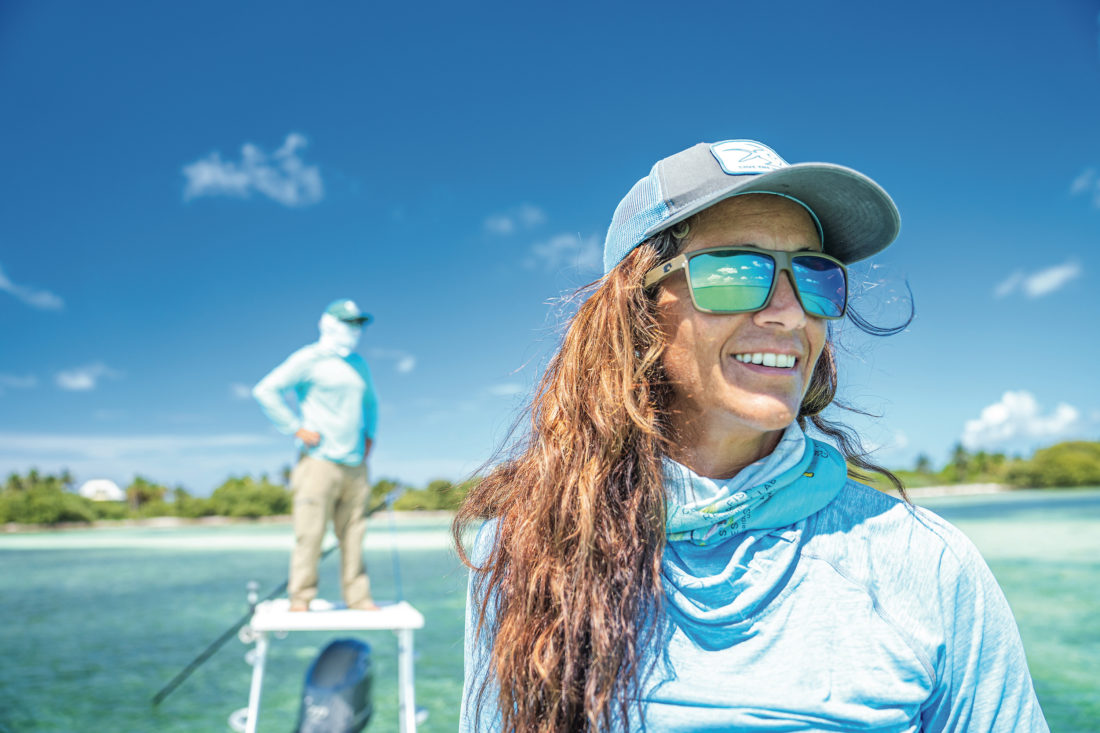As a young child, Jennifer Schopf Rehage was exposed to fishing in a singular way. She grew up in Montevideo, Uruguay, where her grandfather presided over a local fishing club that had its headquarters on the ocean. “It was just a bunch of wonderful old gentlemen hanging out together,” she recalls. “They made fishing nets by hand, built boats, played cards, and fished and cooked. And all the while, my sister and I were running around between them.”
Rehage moved to Miami in 1988, midway through high school, and as an adult continued to immerse herself in marine environments. Today she’s a coastal and fish ecologist and professor at Florida International University’s Institute of Environment, where she studies how “disturbances,” both from natural causes and from humans and water management, affect fish. This year, when her team announced the results of an FIU/Bonefish & Tarpon Trust study on the presence of pharmaceuticals in bonefish, Rehage’s findings lit a media firestorm.

As lead researcher, Rehage oversaw the analysis of ninety-three South Florida bonefish for 104 commonly prescribed pharmaceuticals. Every single fish tested positive for at least one of the drugs. The average bonefish had seven different drugs in its tissues. One fish had seventeen. Blood pressure meds, antidepressants, antibiotics, opioids—altogether, the bonefish samples included fifty-eight different drugs.
Just as concerning: Researchers found the doped-up bonefish everywhere they looked, from Biscayne Bay to off Key West, near both urban and rural areas. “We did not expect that,” Rehage says. Humans typically excrete 50 percent of the pharmaceuticals they consume, and most water treatment plants aren’t set up to filter medicine from the water. The leftover chemicals enter rivers, bays, and oceans, and then contaminate shrimp, crabs, and other bonefish prey.
“A lot of fingers get pointed in a lot of directions when it comes to water quality,” Rehage says. “Who’s the bogeyman: agriculture, stormwater runoff? In this case, it’s all of us. It literally comes out of your body. And the solution is there, simple and feasible.” Although expensive: Upgrading water treatment and septic systems would go a long way toward removing the drugs.
“We peeked under the covers, and it was like, oh my goodness, it’s going to be a bad one,” Rehage says. “But we have to come to terms with this, and the study feels like the first step on a long road to make
it right.








